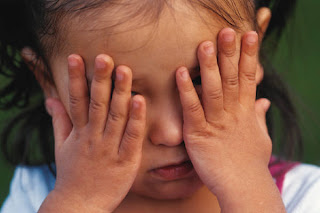
By far the most frequently voiced concern about encouraging babies to use signs to communicate before they can talk is that doing so will slow down verbal development. In fact, the exact opposite is true. Baby sign language actually speeds up the process.
How do we know? With a grant from the federal government, Dr. Susan Goodwyn and I compared verbal development in babies using the Baby Signs® Program with that of non-signing babies. In test after test the babies who signed were more advanced than the non-signers in language skills. (The published study is available on our Baby Signs web site.) We really weren’t surprised because we had already observed the following ways in which baby signing spurs language skills.
• Signing is to talking as crawling is to walking. In other words, just as crawling excites babies about getting around even faster by walking, the excitement of being able to communicate with signs motivates babies to figure out ways to communicate better—and the most obvious way is with words.
• Signing provides practice. The experience of signing teaches babies useful lessons about how language works (like using symbols to label objects, etc.). These lessons speed up the process of learning to talk once words are finally available.
• Signing pulls language from adults. The natural reaction to a baby’s use of a sign is to flood the child with words, and the more words a child hears, the faster he or she will learn to talk. What’s more, signs enable babies to pick the topic of conversation, thereby increasing the likelihood that they will listen attentively to the words parents say.
• Signing changes the brain. Every time a baby successfully uses a sign to label something, circuits in the brain are strengthened; circuits that then make learning words easier.
• Signing makes book-reading more fun. Babies who sign can actively participate in book-reading by labeling pictures they see well before they would be able to do so with words. Because taking a active role is more exciting they sitting passively on the sidelines, thereby making the experience more fun. How does that help language? Books expose children to lots of new vocabulary words and stimulate conversations.
So, the next time someone suggests that your use of the Baby Signs® Program is going to keep your child from talking, just smile knowingly, roll your eyes, and say “Oh, that old wives’ tale!”
Happy Signing (and don’t forget to follow us on Facebook)!
Linda
Linda Acredolo, Ph.D.
Co-Founder, the Baby Signs® Program
and
Professor Emeritus, UC Davis





